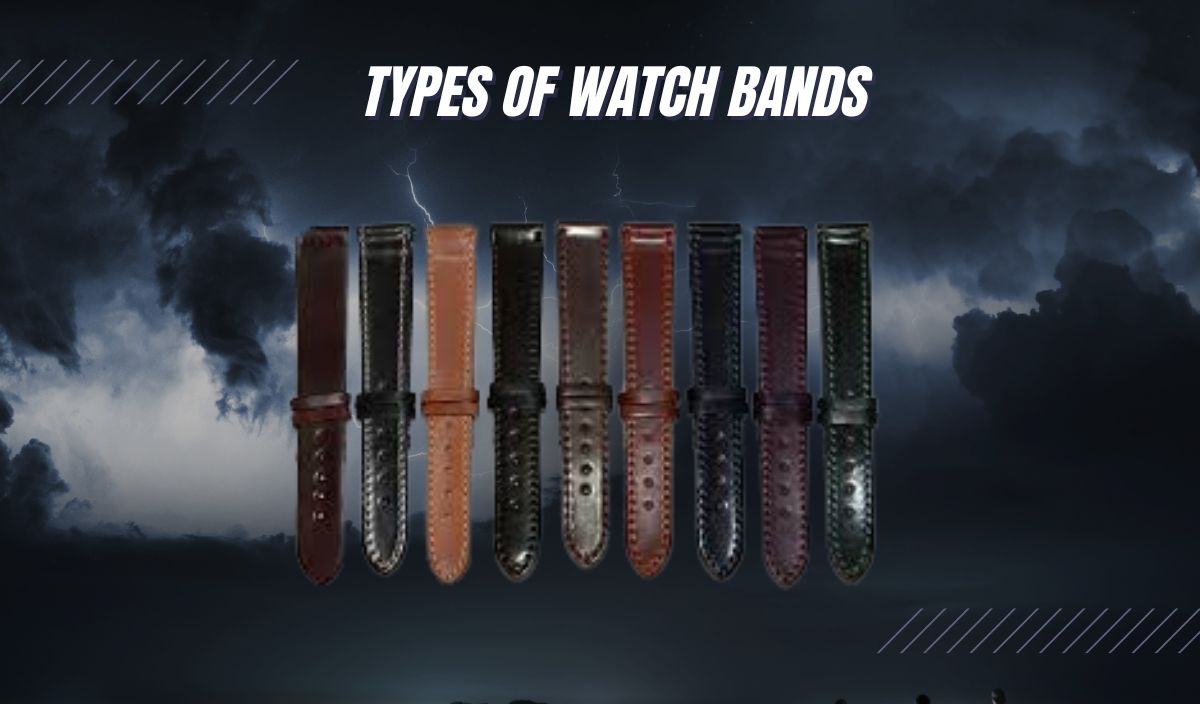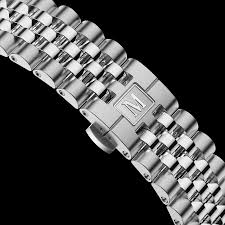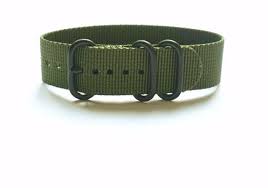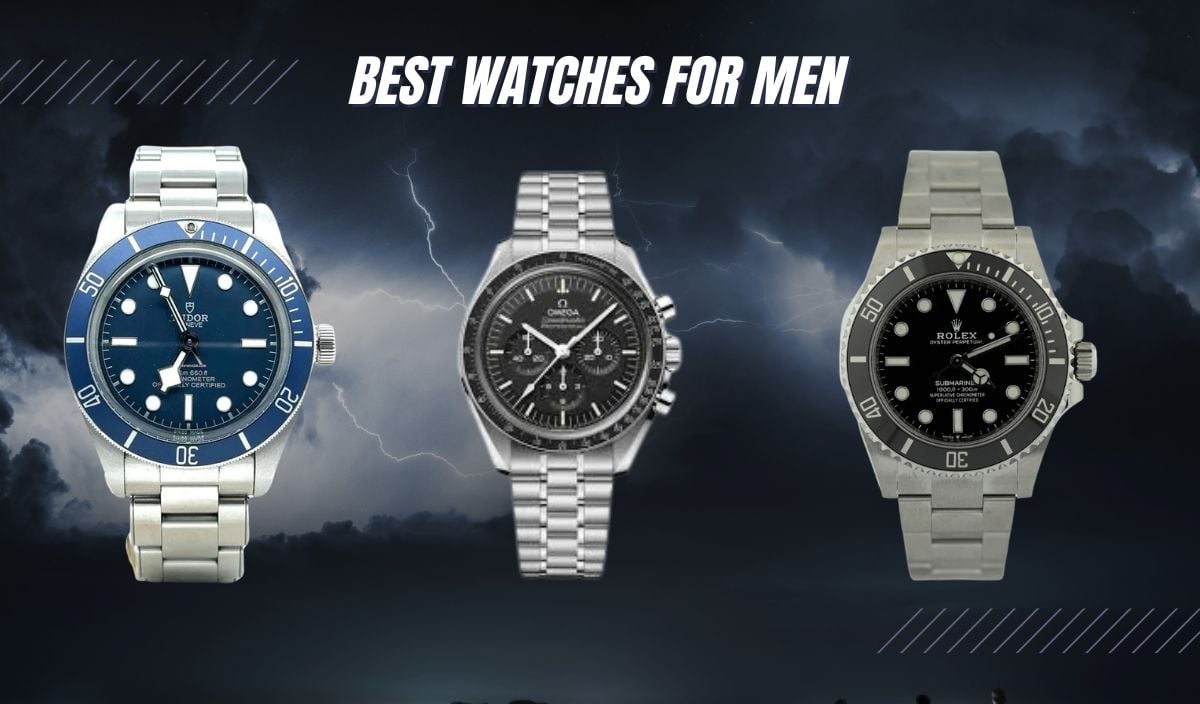
Everyone loves a good “best” list, and I originally intended to include my top 10 watches here, but then after mulling it over in my head, I realized that 10 just didn’t cut it. In the dynamic age of social media and fashion forward trends, I think that offering a greater variety—from the perspective of price, style, and purpose—will best meet the demands of our esteemed readers. After all, there are so many good watches out there, so if we left one of your favorites off of this list, don’t take offense!
History of Men’s Watches
As many may know, the first watches were essentially miniature versions of clocks, so they were still too large to be worn on the wrist. In the 16th century, these “miniature clocks” were known as pocket watches, and while they were small enough to be carried, they were typically attached onto chains and worn in pockets (hence the name) or pinned onto clothing.
The prominence of wrist worn watches didn’t begin until the early 20th century. In 1904, Cartier designed a watch for Alberto Santos-Dumont, an aviator with a “functional” need for accessible timekeeping while flying. And then the start of The Great War (World War I) required a more practical timekeeping solution for combat. Soldiers began strapping watches to their wrists, using makeshift leather straps or fabric brands to secure their pocket watches onto their wrists.
The rest is history—literally!
Top 15 Best Watches for Men
Tudor Black Bay Fifty-Eight (ref. M79030N-0001)

Ah–Tudor. The little sister of Rolex has sure as heck been making a lot of noise these days. Established in Geneva in 1926, Tudor has a rich history of watchmaking. But it wasn’t really until 2013 that Tudor started hitting its contemporary stride, triumphantly returning to the U.S. market with the Heritage Black Bay—a vintage inspired dive watch with an iconic burgundy bezel. The watch was well-received, but as smaller watches became trendy, some complained that the original Black Bay was a bit too large.
Tudor listened, releasing the Black Bay Fifty-Eight at Baselworld in 2018. With a screw-down crown, a rotatable bezel, and robust construction, this is a purpose-built dive watch. This timepiece offers a Goldilocks sizing of 39mm with a lug-to-lug of 47.8mm and a case thickness of 11.9mm. Juuuust Riiight. It also features an in-house caliber (MT5402) with COSC accuracy and 70 hours of power reserve. With an MSRP of $4,175, Tudor has set the bar high with the Black Bay 58.
Omega Speedmaster Moonwatch Professional Master Chronograph (ref. 310.30.42.50.01.002)

Omega watches have adorned the wrists of astronauts, secret agents, celebrities, professional athletes, and even yours truly. They are one of the most globally recognizable brands, with a rich history of horological innovation and superb craftsmanship. When people think of Omega, they usually think of the Speedmaster Moonwatch.
The Speedmaster Moonwatch Professional Master Chronograph is the “souped-up” version of Omega’s legendary offering, featuring OMEGA’s extraordinary Co-Axial Calibre 3861, which has METAS certification and an exhibition caseback showing off pristine finishing. This version of the watch also has a domed sapphire crystal for extra durability. With a 42mm case diameter, this is a very wearable watch; moreover, with an MSRP of $8,000, I truly believe that you’d be hard pressed to find a better value in terms of history, craftsmanship, and brand recognition.
Rolex Submariner (ref. 124060)

You’ve seen it before: a green backdrop, the iconic crown, the gold embossed lettering. Rolex is arguably the most recognizable brand in the world. It’s certainly the most recognizable watch brand. Amongst its legendary offerings, one watch stands head and shoulders above the rest: the Submariner. First released in 1954, the watch has evolved through the decades, maintaining its vintage inspired design language while adopting new case and movement technologies.
The latest iteration, reference 124060, has a 41mm case diameter, a sapphire crystal, 300m of water resistance, and a Superlative Chronometer accurate movement with 70 hours of power reserve. It has all the trimmings expected of a modern luxury dive watch: a ceramic rotating bezel, long-lasting lume, and a robust bracelet with micro adjustment clasp for precise fitting. You could own the watch Sean Connery famously wore as Bond, all for a very reasonable $9,200.
Grand Seiko SLGA009

Grand Seiko, from a horological standpoint, is the pride of Japan. And yet, for decades, people have scrunched their nose at the prospect of spending “Swiss watch money” for a fancy Seiko. Fools—all of them. To see a Grand Seiko in person is to witness the perfect amalgamation of art, design, and engineering. In recent years, Grand Seiko has pushed hard to gain ground in the United States, and they are doing so with great success.
Arguably, they have entered a new era with the release of their Evolution 9 styling, The bold hands and distinctive, grooved markers offer exceptional readability, while the case’s Zaratsu-polished mirror finish—free from distortion—and the subtle alternating hairline finish create a soft, harmonious radiance. With its wide lugs and low center of gravity, the case rests comfortably and securely on the wrist. The SLGA009, or “White Birch,” is my favorite offering in the Evolution 9 series.
The dial is absolutely gorgeous, with long vertical grooves that resemble the bark of a white birch tree. And yes—you are getting the 9RA2 Spring Drive Caliber with 5 days of power reserve and +/- 10 seconds per month of accuracy (yes, you read that correctly). With a 40mm diameter and a lug-to-lug of under 48mm, this watch fits all wrists and all occasions. At $9,300, this is quite a value proposition, too!
Patek Philippe Nautilus (ref. 5811/1G)

Founded in 1839 in Geneva, Patek Philippe has established itself as a leader in high horology, pioneering many complications and design elements that are now widely adopted across the watch industry. Included in its numerous horological achievements are the creation of the first annual calendar watch and the introduction of wristwatches featuring perpetual calendars and split-seconds chronographs. Patek Philippe enjoys popularity across its collections, but their Nautilus sports models are some of their most recognizable pieces.
The Nautilus (ref. 5811/1G) is my favorite Patek—let’s call it a grail of mine. It features a case and bracelet in white gold as well as a blue sunburst dial with a black gradation to the periphery. At 41mm, though with a lugless design, the watch wears more like a 38 or 39mm. At a mind-boggling 8.9mm thin, it will fit under any cuff. The party continues on the back, of course, with a movement worthy of a jeweler’s loupe. A date at 3 o’clock keeps the dial uncluttered. An MSRP of $72,230 is certainly a big ask, but this is no mere timepiece; it’s a Patek Phillippe.
Blancpain Fifty Fathoms Automatic 42mm Black Dial (ref. 5010 12B30 B52B)

Many believe that Rolex was the first commercial dive watch to market, but Blancpain released their Fifty Fathoms a full year before the crown did. Blancpain released the Fifty Fathoms in 1953, and it quickly became one of the first modern dive watches, setting the standard for timekeeping in underwater conditions. Its design, including a rotating bezel and high water resistance, made it a key tool for both military divers and professional explorers.
The 5010 12B30 B52B Fifty Fathoms features a 42mm titanium case and high quality canvas strap. There is a date complication at the 4:30 and a beautiful exhibition caseback, showcasing the self-winding Calibre 1315, known for its impressive 120-hour power reserve. If you are looking for a high-end dive watch that is lightweight and purpose-built, you simply can’t go wrong with the Fifty Fathoms. Its MSRP is $18,400.
Audemars Piguet Royal Oak (ref. 15510ST.OO.1320ST.06)

Audemars Piguet has been crafting watches since 1875, when founders Jules Louis Audemars and Edward Auguste Piguet registered the brand in Switzerland’s Vallée de Joux. Today, the company is headquartered in Le Brassus and remains one of the few watchmaking firms still privately owned, with the Audemars family at the helm. I have to admit, if I were to close my eyes and envision a luxury sports watch, it would be the Royal Oak every time.
Designed by Gérald Genta and released in 1972, the Audemars Piguet Royal Oak was the first true luxury sports watch. At 41mm, the stainless steel Royal Oak with blue dial is the pinnacle of stainless steel sports watches. The integrated bracelet has an almost ethereal quality to it, and color matching date wheel compliments the overall symmetry of the timepiece. With an MSRP of $24,900, the AP Royal Oak is a sound investment that can be enjoyed for centuries to come!
Glashütte Original PanoMaticLunar Silver (ref. 1-90-02-42-32-64)

This legendary Maison’s name comes from a small town in Saxony called Glashütte, where German watchmaking was born hundreds of years ago. This town has a legacy of producing some of the finest timepieces in the world, each bearing the mark of German excellence and craftsmanship.
With a rich history spanning over a hundred years, Glashütte Original became part of Swatch Group—the world’s largest watch group—in 2000, affording the brand unprecedented global reach. With availability in over 40 countries, Glashütte Original is a true “in-house” watchmaker, creating nearly 100% of the components that go into their watches. The Glashütte Original PanoMaticLunar Silver is a watch that screams Germany—in the best possible way! It has two subdials, one for the actual watch, and the other as a small seconds, overlapping each other.
It has a silver galvanized dial, which is so pretty to look at, a big date complication, and a gorgeous moonphase at 2 o’clock. The watch is just as nice to look at through the sapphire crystal caseback, showcasing a hand-finished movement with all the bells and whistles. At 40mm, this stainless steel watch can be dressed up or down. With an MSRP of $11,200, I don’t think you can find a timepiece that packs quite as much of a punch as the PanoMaticLunar Silver!
Hublot Spirit of Big Bang King Gold (ref. 642.OX.0180.RX)

The Hublot Big Bang collection is deeply rooted in the brand’s history. Drawing inspiration from the inaugural Hublot timepiece of 1980, it seamlessly incorporates iconic design elements such as the round bezel reminiscent of a porthole, visible screws, and integrated straps. Officially unveiled at Basel in 2005, Hublot’s Big Bang watches have become a mainstay within the luxury watch industry.
The Spirit of Big Bang King Gold is the perfect fusion between tradition and innovation—in an entirely skeletonized design. The 42mm watch is constructed from 18K “King” gold, featuring 100m of water resistance, 50 hours of power reserve, and a super comfortable rubber strap. This timepiece offers chronograph functionality and eye-catching looks. If you want something that is both loud and elegant at the same time, the Hublot Spirit of Big Bang King Gold can be yours for $44,900.
H. Moser & Cie. Streamliner Centre Seconds Matrix Green

I have always loved the idea of stainless steel sports watches, made famous by Gerald Genta. My favorite color is green, so I guess having the H. Moser & Cie. Streamliner Centre Seconds Matrix Green on this list was a no brainer. Founded by Heinrich Moser in 1828, the company was relaunched in 2005 to great critical acclaim.
When I first laid eyes on this watch, I realized that this was not just a homage. This was something entirely new. It looked almost “alien-like” in person—as if some advanced civilization had crafted it with laser beams. The bracelet articulates wonderfully. You catch your breath when looking at the sunburst green dial.
At 40mm in diameter, this watch is as wearable as it gets, especially when considering it has an integrated bracelet. The in-house movement is finished to the highest of standards, offering superb accuracy and 72 hours of power reserve. With an MSRP of $24,000, this is one of the best value propositions in all of high-horology.
Parmigiani Fleurier Tonda PF Sport Chronograph Steel (ref. PFC931-1020001-400182)
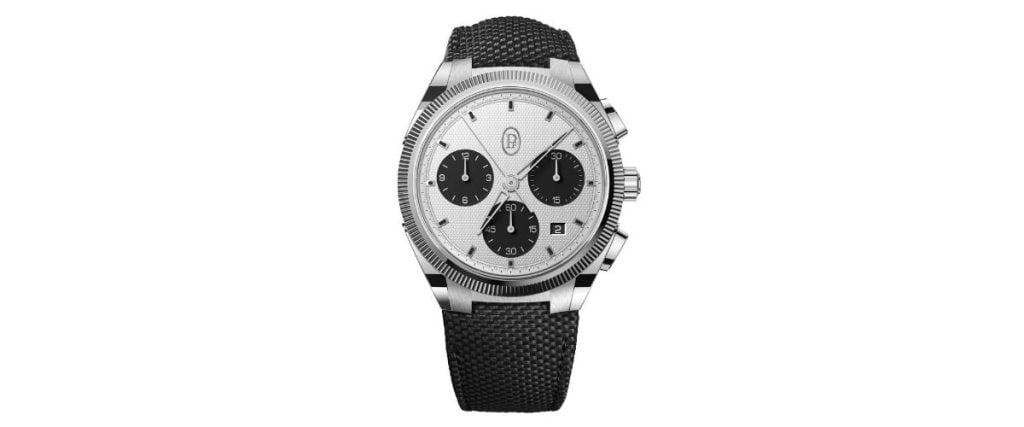
Parmigiani Fleurier is a Swiss watchmaking brand that was founded in 1996 by master watchmaker Michel Parmigiani. Known for its dedication to craftsmanship and understated luxury, the brand combines traditional horological artistry with modern innovation. The first time I held a Parmigiani Tonda in my hand, I was blown away by the finishing and quality.
Pictures truly don’t do these watches justice. Powered by Calibre PF070, a COSC-certified chronograph movement with a 65-hour power reserve, the Parmigiani Fleurier Tonda PF Sport Chronograph Steel is a true work or artistry, with a hand-guilloché dial with a Clou Triangulaire pattern, a coin-edged bezel, and a movement showcasing anglage and hand beveled bridges, showcasing true horology.
An integrated bracelet design makes the 42mm stainless steel case very comfortable on the wrist. Beyond chronograph functionality, the watch also has a date at the 4:30 and 100m of water resistance. The Parmigiani Fleurier Tonda PF Sport Chronograph Steel has an MSRP of $30,000.
Breguet Marine Tourbillon (ref. 5577PT/Y2/9WV)

As one of the oldest surviving watchmakers, founded in 1775, Breguet’s popularity can be attributed to heritage, quality, and brand resources. Having been acquired by Swatch Group in 1999, Breguet’s position as the flagship brand within the Swatch Group affords the brand the financial resources and creative freedom to continue to innovate. Imagine a watch that blends so many distinct styles and horological innovation into one sleek package?
Imagine the Breguet Marine Tourbillon. Integrated sports watch—check. Purpose-built marine watch with 100m of water resistance—check. Roman numeral indices for a dressier appearance—check. Tourbillon, an ode to Abraham-Louis Breguet along with “Breguet” style hands—check. At 42.5mm, with only 9.5mm of thickness—yes, you read that correctly—this is a very approachable timepiece, regardless of your wrist size. With an MSRP of $185,800, the Breguet Marine Tourbillon isn’t just a watch, it’s an heirloom artifact that can be handed down for generations to come.
Oris ProPilot X Kermit Edition

Founded in 1904, the nascency of Oris parallels the fledgling aviation industry of the time period. By 1911, Oris developed their first pocket watch for pilots, and by 1917 they developed their first wrist-worn pilot’s watch. Their Big Crown watches—so that the watch could be wound with gloves that pilots wore—often had pointer dates, and are still offered today, with vintage styling for the contemporary consumer. It wasn’t until 2014, however, that Oris decided to create an amalgamation of vintage and modern, which ultimately gave birth to the Oris Big Crown ProPilot line of watches.
Being well received, Oris continued to innovate and invest in its own identity with the release of the Big Crown ProPilot X, which first debuted in 2019. The Oris ProPilot X Kermit Edition was first released in 2021. It has a “lime” green dial with Kermit the Frog appearing on the first day of every month. While it might be loud for some collectors, the Oris Pro Pilot X Kermit Edition is actually a watch with a splash of color that can be worn with casual or formal attire.
The watch is constructed in lightweight and durable titanium, and has a very wearable 39mm size. The in-house caliber Oris 400 is also featured through the exhibition caseback, and offers a 5-day power reserve and an unheard of 10 year warranty! All of this is available for $4,900.
Longines L3.802.1.53.6 Spirit Zulu Time Anthracite Dial on Bracelet (ref. L3.802.1.53.6)

The Spirit Zulu Time 39mm, from Longines, is the impetus for Longines’ resurgence within the watch community. Not only is this watch absolutely gorgeous—I dream about the green bezel version—but it is also built to a high standard of finishing. Offered in a variety of materials and sizes, the L3.802.1.53.6 Spirit Zulu Time is made from titanium and is 13.5mm thick, with a 46.8mm lug-to-lug. This is as wearable as a watch can be, folks, offering superb legibility and the ability to easily slip under a cuff.
What’s more, unlike most of its competition, the Longines Spirit Zulu Time 39mm is a true GMT, allowing the hour hand to be independently adjusted. The movement within also parallels the excellence of the case. It offers a COSC certified ETA movement, exclusive to the brand, with 72 hours of power reserve. If you are looking for one of the best bargains in the industry, the Longines Spirit Zulu Time 39mm retails at $4,275. I love this watch so much that I just couldn’t keep it off this list!
Seiko Prospex Alpinist SPB121

Some watches are so iconic that you can close your eyes and picture them vividly in your head. I feel this way about the Seiko Prospex Alpinist. The Seiko Alpinist story dates back to the 1960s, when Seiko released a rugged watch for Japanese mountaineers. The 2006 version was more closely related to the SPB121, with the iconic green dial and rotating inner compass. And Seiko’s latest iteration, the SPB121 is the perfect amalgamation of form and function.
This is a unique and timeless watch, and I’ve always felt that it has the ability to be worn for outdoor activities as well as dressed up for formal wear. A 39.5mm case with a 46mm lug to lug makes for a very wearable watch, and the heart of the watch is powered by Seiko’s in-house 6R35, good for 70 hours of power reserve. Did I mention that it has a sapphire crystal, screw down crown, and 200m of water resistance?
Okay—I know what you are thinking. So how much for all of this? With an MSRP of $725, the SRB121 is a testament that you can still buy a quality timepiece for under $1000.
Conclusion
And just like that, you have 15 of the best watches for men, curated by Exquisite Timepieces for your enjoyment. At the end of the day, the best watch is the one that scratches your horological itch, and from a price point that makes sense for you.
Here at Exquisite Timepieces, you can feel free to contact us to help you find your next timepiece. Or feel free to explore our curated collection online or experience the exclusive range available at our boutique in Naples, Florida.











